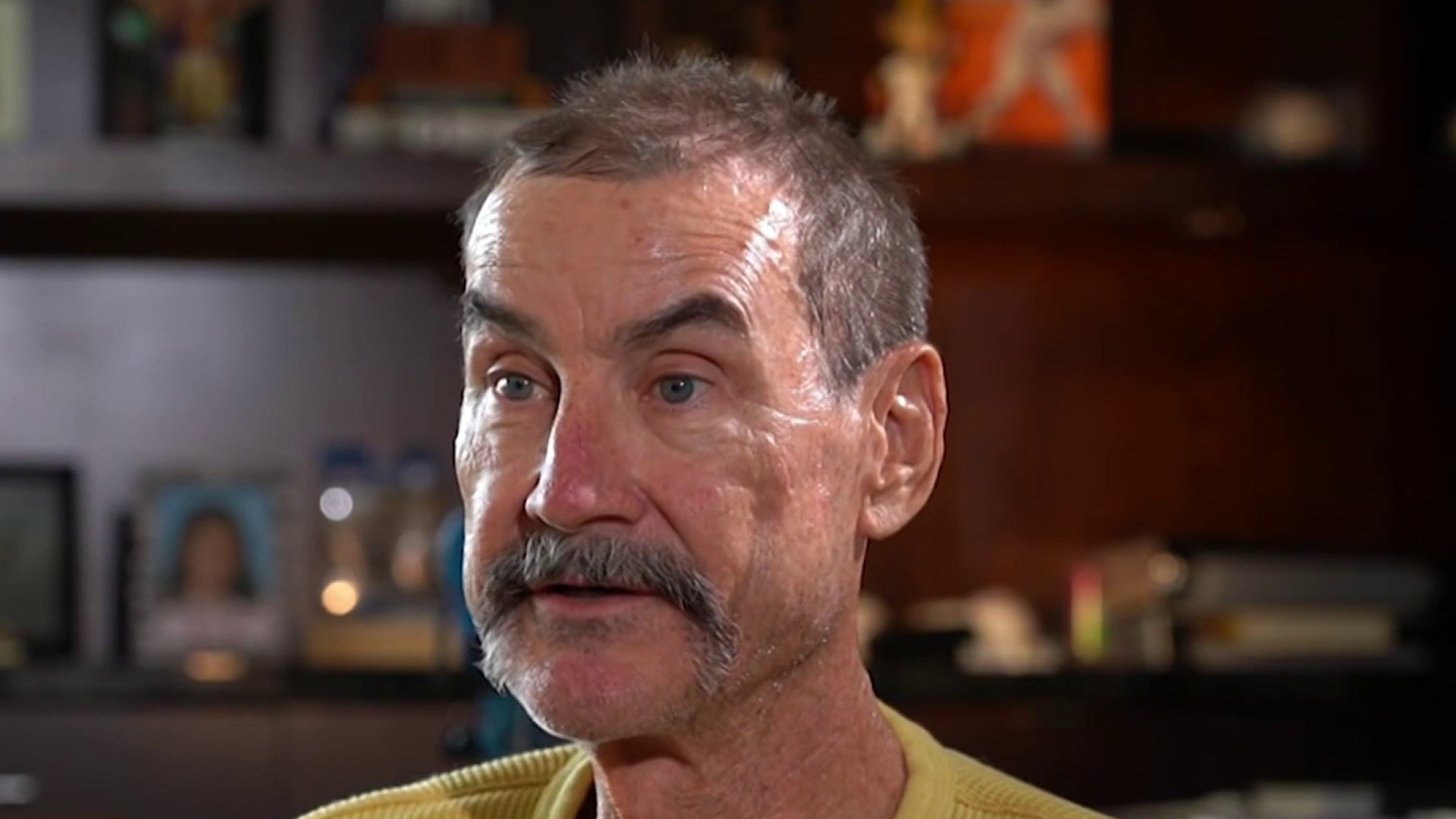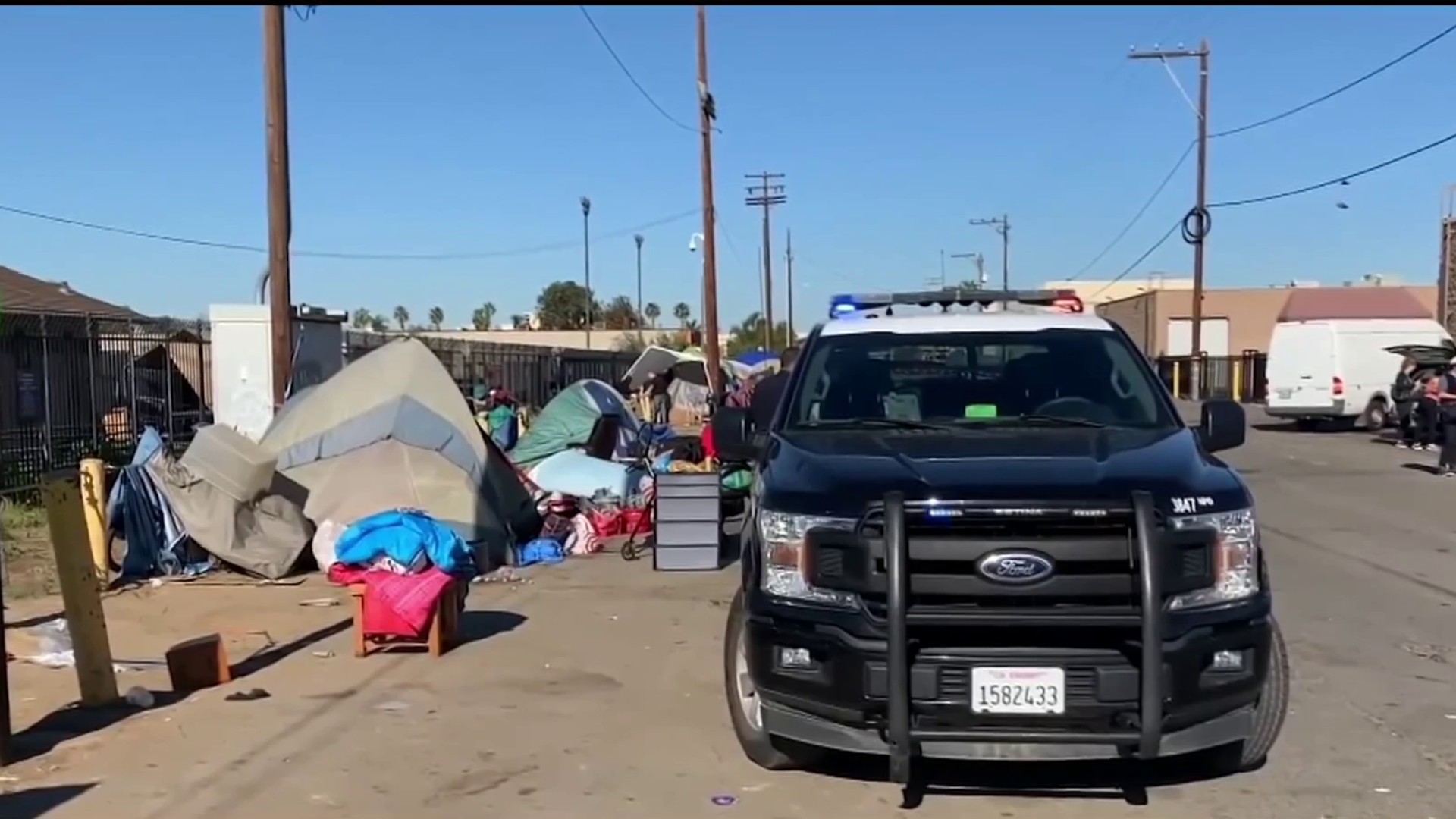Caring for people living on San Diego's streets is a difficult challenge taken up by many organizations, most of which are nonprofits. One of those groups, Healthcare in Action, is taking it on one patient at a time.
Ten people make up the Healthcare in Action team. Laine Goettsch is lead clinical support.
“What you see is layers and layers of trauma,” Goettsch said.
Teagan Flint is a physician assistant.
Get San Diego local news, weather forecasts, sports and lifestyle stories to your inbox. Sign up for NBC San Diego newsletters.
“We can go to them and we take that intimidation piece out of the equation,” Flint said.
Jesse Angeles is lead peer navigator.
“I just hope that every person we encounter, that we can help them out,“ Angeles said.
This team is facing the many ills of living on the streets of San Diego head-on, five days per week.
The first appointment of the day is Jerome and his adult son who wished not to be identified.
“Laine and Teagan, they are wonderful. I Iove these two. These two are like my daughters,” Jerome said.
Jerome and his son are going through homelessness together.
“We already have a good relationship. It’s even gotten stronger,“ Jerome said.
Related Stories
The team has been treating and counseling both father and son since last July. They have earned their trust and, as a result, the two are making progress.
“I try to offer people every day my smile because it’s contagious. Hopefully, they will smile back,” Jerome said.
Goettsch has developed her own wisdom for the people living on San Diego streets.
“They have stories and lives. This is not a definition of who they are but a snapshot of where they are,“ Goettsch said.
The team offers regular primary care, psychological treatment and medication for those with addictions.
“It’s needed. it's very much needed. They do a heck of a job out here and they help a lot of people,“ Jerome said.
“My day-to-day is, 'What is this person in front of me — what is their goal? Did we meet it?' If we did, that’s a success. However small it is, that is a success,“ Goettsch said.
“San Diego is home. Being able to help out in this way, I’m involved as much as I can,“ Angeles said.
Angeles is a bit of a fixer, you could say. He connects homeless clients with programs, shelter and housing.
“What can I do for you right now and then what can I do for you down the line?“ Angeles said.
Last year the San Diego County District Attorney’s office released a two-year study of crimes connected to homelessness.
The data shows individuals experiencing homelessness are victims of more serious crimes at higher rates than the non-homeless population.
The results indicate people experiencing homelessness are 19 times more likely to be murdered, 27 times more likely to be victims of attempted murder, 15 times more likely to be robbed, 10 times more likely to be victims of elder abuse and nine times more likely to be sexually assaulted.
“When I think of the streets, I think of everything amplified by 1000. Women are treated so poorly on the streets, that’s amplified. Racism, that is amplified. Everything we have in our own society is just amplified,“ Goettsch said.
The city's plan is to commit $200 million from the budget for shelters, services and housing. County supervisors are pledging hundreds of millions, which includes state money, to buy up hotels they’ll convert to permanent housing.
If you’re of the belief a home or a job are the solutions then you’re not alone, but the street team will tell you such goals are a marathon. Their successes are measured in inches.
Meet Barbara. She lives on an F Street sidewalk by the post office.
“She has 11 different medications she has a hard time taking because she can’t reach them. She has mobility issues,“ Flint said.
Flint has been working this job for 13 months. In that time she has learned a great appreciation for winning the small battles.
“You just can’t put somebody in a house and expect them to thrive. You need to give them the tools to do so,” she said.
The team says they treat approximately 20 patients a week. Their visits are between 30 minutes and an hour.
In a city with approximately 2,000 people experiencing homelessness, Goettsch said policy makers are asking the wrong question. It’s not how quickly can you get them housed.
“The question is, 'How are we going to walk along side of them and truly rehabilitate people?” Goettsch said.
Mayor Todd Gloria expects the city council to vote on an ordinance banning encampments around schools and parks. If passed the ban will include the entire city as long as there are open shelter beds.



